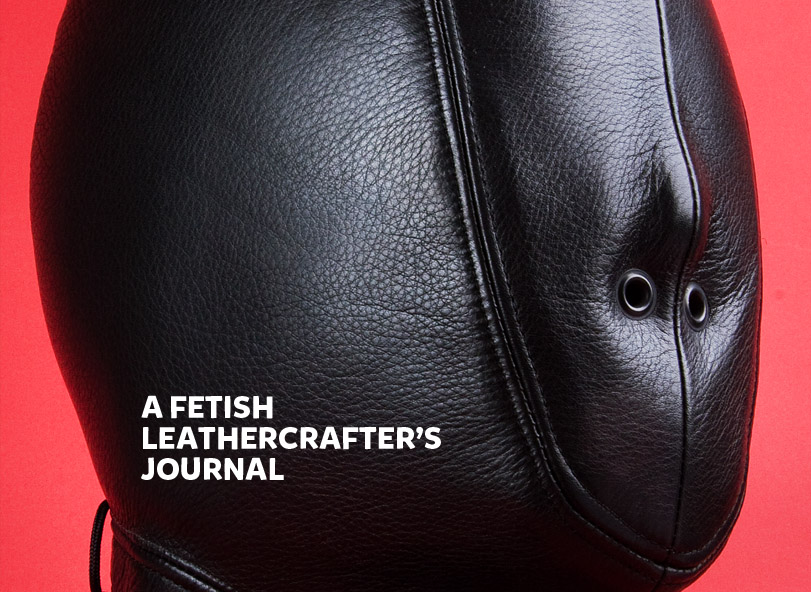So where were we? Oh, yes: working on this sexy beast:
Since we last spoke I glued down the seams where the hood and arm pockets meet the body.
The next step is to glue and flatten the rear seam, and get it ready to take the zipper. I prop it up on the head form to keep it from getting stuck to the work surface while the glue dries.
When the glue sets up, the rear seam is turned under and gently set with the mallet.
There will be a single zipper so I want to make sure the transition from the body to the hood is smooth.
Before we set the zipper in, I want to add a reinforcement band along the bottom edge of the jacket to take the stress of the crotch straps. This leather is not strong enough to take that kind of punishment on its own, so I cut a 2-inch strip in the shape of the lower edge of the jacket from some heavy scrap. The reinforcement and edge get glued up...
...and the edge is set in place.
Now it's time for the rolled edge to finish the seam. This is clipped in place (good sides together).
Then sewn about 1/8" from the edge.
You want a little extra at the ends...
...so you can cut a little tab to tuck around back. The rest gets trimmed flush with the edge of the opening. These little tabs even get skived to make them gently transition to flat when seen from the front.
You want to tuck the flap around and glue down the first part of the rolled edge, but not the backside yet. You want to sew in the zipper first, so it's sandwiched in between the reinforced edge and the rolled edge.
It should look like this:
Here's the view from the front side:
Lately I've been sewing the zipper freehand first, just feeding it in by hand for the first (in this case the left) side. For the second (right) side of the zipper, I'm using a combination of double-sided craft tape and clips to hold it in place.
It's really important to get the seams to align, and that double-sided tape helps you do that - before you even start to sew. The clips just act as extra insurance, and back the tape up a bit.
You can see the little bit of double-sided tape on the zipper in the image below:
Now that the zipper is in, time to trim the excess zipper to size and glue the rest of the rolled edge seam.
Roll her up...
And topstitch along the rolled edge to hold everything in place. I didn't take a picture of it, but this is where the tongue gets sewn in as well...
Next up: the straps. I have a tip to share, about glue. When you get to the bottom of the can, the glue starts to dry out a bit, and thicken up. It doesn't want to flow, and can be harder to brush on to your seam allowances. I usually move on to a new can.
But instead of throwing the old thickened glue away, I save it for straps. It's ideal because you need a lot of glue and can use a larger brush when making straps. The old thick glue still holds perfectly well. It's a good way to use every bit that you can.
At this point I'm not sure how long my straps are going to need to be, so I get the longest possible strips out of the remaining hide. Let's just say that there isn't a lot of scrap left over after this project...
I cut about 2.25-inch wide strips to make the 1-inch final strap. The straps formed, folded and pounded flat.
That's it for now, as I don't have the hardware yet. But it should arrive soon... But we got a lot done. We have the rolled edge complete.
The zipper and tongue are in...We have a heavy leather reinforcement along the bottom edge, and straps ready to be (removably) attached.
You can almost see the finish line from here.
Take care for now...






































































